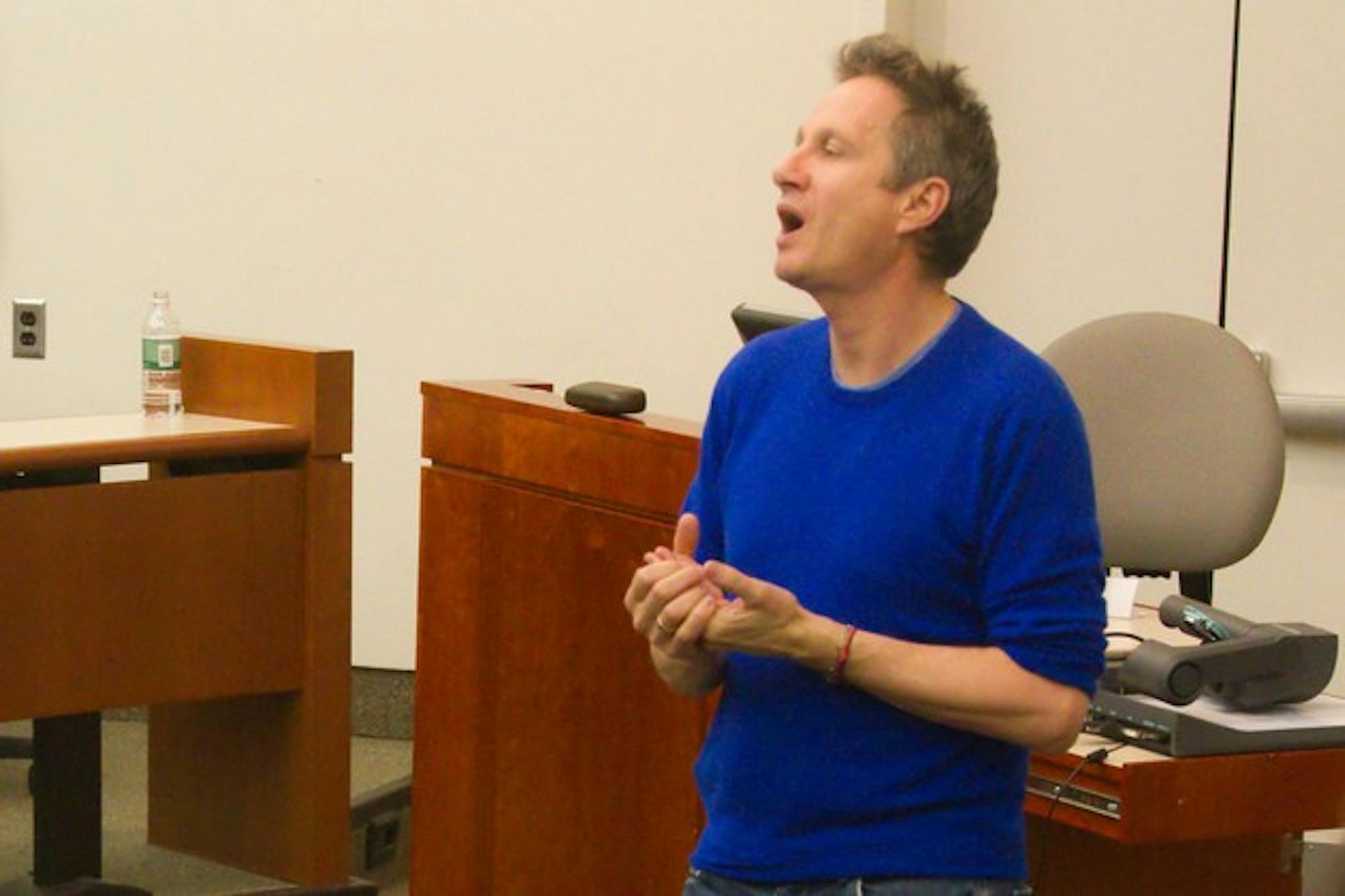The man behind much of this magic was Peter Schneider, the president of feature animation for Walt Disney Studios from 1985 to 1999 and chairman of the studio from 1999 until his departure from Disney in 2001. Schneider credited with successfully leading Disney Animation Studios during the era of such cherished films as "The Little Mermaid" (1989), "Beauty and the Beast" (1991) and "Aladdin" (1992) visited Dartmouth on Thursday to screen his new documentary "Waking Sleeping Beauty" at the Tuck School of Business' second annual Media and Entertainment Symposium.
As head of Disney Animation at the time, Schneider was also involved with Pixar Animation's emergence into the mainstream, with 1995's "Toy Story."
"Waking Sleeping Beauty" tells the story of Disney Animation Studios' transition out of its "dark ages" between 1984 and 1994, documenting the abundant creative genius and bitter internal feuds of the studio during those years.
According to Schneider, the 2009 release of "Waking Sleeping Beauty" satisfied his desire for several years to share the inside story of Disney's rebirth.
"Waking Sleeping Beauty" documents the fundamental shift in the animation process that happened at Disney during Schneider's tenure. While Disney had previously churned out an animated film every four years, they were now doing one full-length feature per year.
"I always felt that there was a interesting, compelling story that happened between '84 and '94," Schneider said in an interview with The Dartmouth. "And because of the various conflicts between the principal players, Michael Eisner, Jeffrey Katzenberg and Roy Disney, nobody wanted to talk on the record."
According to Schneider, this all changed two years ago when Eisner, Katzenberg and Disney agreed to be interviewed for the documentary.
In the mid 1980s, Disney's feature animation department, the creator of such classics as "Snow White and the Seven Dwarfs" (1937), "Dumbo" (1941) and "Bambi" (1942) and the former bedrock of the Walt Disney Company, had hit rock bottom. Its recent movies had failed critically and financially, culminating in 1985's flop "The Black Cauldron" (at the time, it was bested at the box office by "The Care Bears Movie"). Animation was gradually being replaced by live-action films.
At Disney, there was talk of getting rid of the animation division all together.
This all changed with Schneider's arrival at Disney in 1985 and the subsequent influx of many legendary animators and visionaries, such as Tim Burton, John Lasseter, Bob Zemeckis and the late Howard Ashman, writer of such iconic songs as "Under the Sea," "Be Our Guest" and "Beauty and the Beast."
"I would like to say that there was an architect [but it was] completely chance," Schneider said of the "perfect storm" (as the film described it) of talent that arrived at Disney at the time. "We're sitting here in the top business school and everybody's talking about business plans [but] it just happened to work."
Disney's new dream team of animators produced films that were both critically and financially successful. "The Lion King" (1994) alone made over a $1 billion dollars in movie, video and merchandise sales.
Although the artists at Disney Animation were working at a breakneck pace one animator in the film recalls having tremors in his hand the day after a vigorous night of sketching they ended up forming an unshakable bond. Their coworkers became their "second family."
"When you talk about Disney, you make the assumption that it's a company," Schneider said. "Disney is nothing but a group of individuals. And the movie was [made] for the individuals."
This "second family," however, did not translate into harmony on the upper rungs of Disney's corporate ladder. The leaders of Disney Eisner, Katzenberg and Disney were constantly fighting for credit and prestige. The conflict came to a boil soon after the release of "The Lion King."
Despite this infighting, Schneider stayed at Disney until 2001, he said. He has since gone on to produce and direct several Broadway and West End plays. Although his departure shocked the business world, Schneider said he knew he was ready to leave Disney shortly after the premiere of the Broadway version of "The Lion King." He said he felt that he had gone as far creatively as he wanted to go, and could go, with Disney, Schneider explained during a question and answer session following the screening.
While he no longer works in the film business, Schneider said he is optimistic about the future of artist-rendered movies, whether hand-drawn or computer generated.
"It doesn't make any difference whether it's a pencil, or a computer, or a camera, or motion-capture," he said. "It's the job of every director, and you're the judge of it, to transport you somewhere special."




